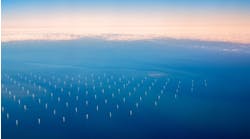Bruce Beaubouef * Managing Editor
While the traditional oil and gas drilling market continues to remain hot, the need for well construction, maintenance and P&A work from offshore carbon capture and storage projects is presenting new opportunities for drilling rig contractors and downhole service firms.
The CCS market and its relevant technologies will be the focus of a session at Gastech 2024 on Wednesday morning at 10 am, with speakers scheduled from MODEC, Petrobras, and HD Korea Shipbuilding and Ocean Engineering.
In some cases, CCS projects will call for new wells to be drilled. In other cases, decommissioned oil and gas fields will be re-used specifically for CCS with gas injected using both old and new wellheads. While it is unclear how much drilling will be required for these projects, some sources have indicated that retrofitting could be more expensive than drilling new wells, making it likely that further drilling will be required at most projects.
Besides drilling services and technologies, CCS projects will require completions, liners, and monitoring products and services. CCS projects may also drive new demand for P&A technologies and services. Many of the world’s most promising geological targets for large scale CO2 storage exist within and above late-life and depleted hydrocarbon plays. Late-life fields often have many existing wells that penetrate the target storage geology and can pose seal integrity risks. Here, advanced plug and abandonment solutions may be needed to ensure that the integrity of the aging well structure is not compromised for the life of the sequestration project.
In Northwest Europe, CCS projects and related P&A work is prompting new jackup rig demand in the region. Two recent contracts provide examples of the CCS trend. The first, involving TAQA and the jackup Valaris 123, entails a program for wells on the Porthos CCS project in the Dutch sector, expected to commence in late 2024. The contract for the Valaris 123 involves six wells plus up to ten optional wells and has a minimum duration of 170 days plus a total optional duration of 300 days.
Additionally, the Hynet CCS project in the East Irish Sea awarded contracts to the jackup Valaris 72 and the jackup Valaris 292, with the Valaris 72 scheduled to begin a P&A campaign in late 2023.
These developments represent a meaningful shift in the offshore rig market, says consulting firm Evercore ISI, indicating nearly four rig-years out of 13.8 rig-years awarded to jackups in the UK, Dutch, and Danish sectors supporting CCS projects this year. Certain projects will require the drilling of new wells to enable CO2 injection, while others might require extensive P&A work, similar to Eni’s Hynet project (a 55-well P&A contract), Evercore said.
Norway in particular is leading the way on offshore CCS projects. At least five operating companies have submitted applications to the Norwegian government to store CO2 in the Norwegian waters of the North Sea. They include Equinor, Neptune Energy, Storegga, Sval Energi, and Wintershall Dea. Two years ago, the semisubmersible Transocean Enabler won a contract to drill one carbon injection well and a side track for another carbon injection well for the Northern Lights CCS project in the northern Norwegian North Sea. Work is expected to wrap up on this project, awarded by Equinor, sometime this year.
The growing number of CCS projects is also offering opportunities for downhole service firms. Halliburton says that it recently completed two subsea wells in the first phase of a cross border offshore CCS project. Phase I of this project includes the capacity to transport, inject, and permanently store up to 1.5 million metric tons of CO2 per year. Carbon dioxide storage will be possible through one injection well, which was sidetracked and completed from the original exploration well and a new contingency well. With these two wells in place, Halliburton says that the customer has plans to drill and complete three additional injection wells to expand capacity by an additional 3.5 million metric tons to a total of 5 million metric tons annually.
To help ensure the safe and permanent storage of CO2 during well construction, several factors were considered, including injection CO2 composition, anticipated reservoir pressure evolution, well temperature variations during injection and shut-in, formation fluids composition, and previous knowledge gained from other CO2 injector wells. Laboratory corrosion testing determined that tubulars and completion equipment installed at the bottom of the well should be 25% chrome alloy or superior materials to allow a 25-year well lifetime.
Halliburton said that during construction of the primary injection well, a 14-in. XtremeGrip low equivalent circulating density (ECD) and 9 5/8-in. XtremeGrip Quick Lock liner hanger were installed and sand control was achieved using standalone sand screens in the openhole section. For the lower completion of the well, the Halliburton Versa-Trieve retrievable sand control packer and FS2 fluid loss control valve were used. The upper completion was finalized using the Halliburton hydrostatic-set Perma-Series HNT packer, 4 1/2- and 7-in. Opsis gauges and the SP tubing-retrievable safety valve (TRSV) to ensure safety.
The contingency injector was completed in a similar manner. A 14-in. low ECD liner hanger was installed during well construction and sand control was achieved by gravel packing the openhole section. A Versa-Trieve retrievable sand control packer and FS2 fluid loss control valve were used for the lower completion, and the upper completion consisted of the X-Trieve XHHC retrievable production packer, two seven-inch Opsis gauges and the SP TRSV. Once Phase I of the project is completed, the operator will have the capacity to capture and store 1.5 million metric tons of liquid CO2 annually. Based on customer demand, the operator may opt to drill and complete additional wells to increase the storage volume annually.
Editor’s note: For further details on the growing CCS market and the opportunities available for drillers, please see the feature article which appeared in the January-February 2024 issue of Offshore magazine.




